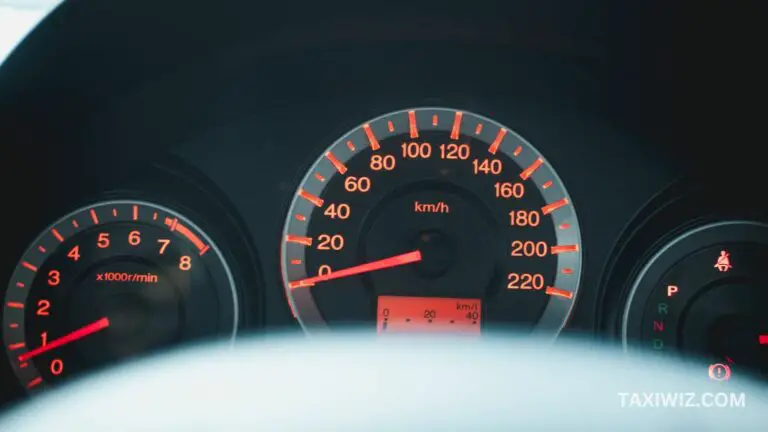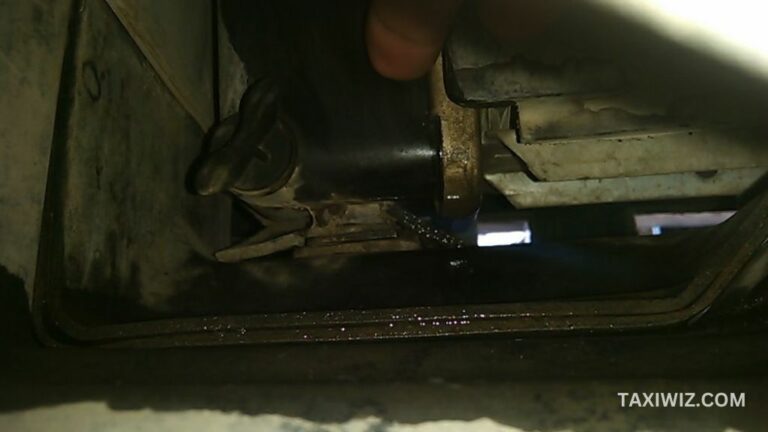Car Low RPM When Idle – Causes, Reasons & Fixes?
Does your RPM gauge dip low when idle? That is a sign that your engine is struggling to maintain its recommended steady idle speed.
A low RPM when idle can be a sign of vacuum leaks, fuel system issues, or engine, mechanical, or ECU programming issues.
Here, we will explore all the common causes that trigger low RPM at idle, how to identify them, and how to fix the problem at hand.
What Is RPM & Low RPM Meaning?
RPM which is short for Revolutions Per Minute, is an unit of measurement used to denote the rotational speed of an automobile’s engine’s crankshaft.
RPM reading will indicate how many complete revolutions the crankshaft makes per minute.
For instance, if your RPM reading is 4,000, it means that the crankshaft is rotating 4,000 times per minute.
Low RPM refers to the relatively slow rotational speed of an engine or motor. When talking about vehicles, low RPM precisely refers to the engine’s crankshaft spinning at a reduced pace.
It particularly refers to when it is idle or not subjected to a significant workload.
The exact range of RPM considered low varies on the specific engine type, design, and the vehicle in question.
Generally, passenger cars or light-duty vehicles maintain an idle RPM range between approximately 600 and 1000 RPM.
How To Identify What Is Causing Low RPM At Idle & Fix It?
In this section, you will learn how to diagnose the issue causing low RPM at idle and measures to take to fix the issue(s) at hand:
1. Thoroughly Inspect Engine Components:
Begin by conducting a comprehensive examination of the engine parts directly influencing idle RPM. Look for indications of blockages, damages, or malfunctions that might disrupt their proper operation.
2. Examine The Air Intake System:
Pay close attention to the air filter, as it can accumulate dirt or debris that restricts the airflow to the engine.
A choked air filter can impede the quantity of air entering the engine, resulting in low RPM. If necessary, cleanse or replace the air filter to ensure unrestricted airflow.
2. Inspect The Fuel System:
Carefully investigate the fuel pump, fuel filter, and fuel injectors for any potential issues.
A clogged fuel filter or faulty fuel injectors can hinder the delivery of an adequate fuel supply, leading to low RPM. Clean or replace these components as per the manufacturer’s recommendations.
3. Check For Vacuum Leaks:
Vacuum leaks within the intake manifold or vacuum hoses can disrupt the air-fuel mixture, directly impacting idle RPM.
Diligently scrutinize the vacuum lines and connections for any signs of leaks, cracks, or loose fittings. You will need to either repair or change any damaged components as per requirement.
4. Verify Throttle Body Functionality:
The throttle body regulates the volume of air flowing into the engine. If it becomes dirty or malfunctions, it can impede the airflow and result in low RPM.
Utilize an appropriate cleaner to thoroughly cleanse the throttle body and ensure it operates smoothly without any obstructions.
5. Inspect The Idle Control System:
Many vehicles are equipped with an idle air control valve (IAC) or idle speed control (ISC) system, responsible for maintaining idle RPM.
Examine these components for any malfunctions or carbon buildup that could hinder their operation. Cleanse or replace them as required.
6. Evaluate Spark Plugs And The Ignition System:
Worn-out or faulty spark plugs can cause misfires, directly impacting RPM. Inspect the condition of the spark plugs and replace them if necessary.
Additionally, thoroughly assess the ignition coils, wires, and distributor (if applicable) for any issues and address them accordingly.
7. Ensure Accurate Engine Timing:
Incorrect engine timing can significantly affect idle RPM. Consult the vehicle’s manual or seek assistance from a qualified mechanic to verify and adjust the timing if required.
8. Fault Codes:
Use a diagnostic scanner to retrieve fault codes stored in the vehicle’s computer. These codes indicate specific issues causing low RPM at idle. Interpret the codes using manual or online resources.
Then troubleshoot and repair the components related to the fault codes, such as sensors or wiring connections. Do follow the recommended procedures in the vehicle’s service manual or seek professional help if needed.
These are some of the most common causes that lead to low RPM when idle along with their fixes.
In case you find that all of the mentioned parts are functioning properly yet you’re facing low RPM at idle, then contact a professional immediately.
15 Common Causes about RPM fluctuation | RPM fluctuation while idling or Driving | P0507 | P2100 >> Check out the video below:
Frequently Asked Questions (FAQs)
1. What is considered to be low RPM at idle?
For most vehicles, having an RPM below 600 is considered to be low RPM at idle.
2. Can poor-quality fuel cause low RPM at idle?
Yes, it can. Poor quality fuel is contaminated with impurities which can affect engine performance that leads to RPM problems.
3. Is it safe to drive around with low RPM at idle?
It is possible to drive with low RPM at idle but only for a short period. Prolonged driving in this state may lead to engine stalling, reduced power, and potential damage
4. Can low battery voltage cause low RPM at idle?
Yes, low battery voltage can create problems for an electrical system which leads to insufficient power for the engine’s idle control system.
5. Are there any software-related problems that can trigger low RPM at idle?
Issues within the engine control unit’s software or firmware have been seen to contribute to low RPM at idle.
Conclusion
Understanding the reasons behind low RPM at idle is imperative if you wish to maintain optimal engine performance.
Addressing concerns such as worn spark plugs, fuel pump malfunction, and clogged air intake filters promptly can effectively resolve the issue at hand.

![Serpentine Belt Noise When Accelerating – [Try This Easy Fix!]](https://taxiwiz.com/wp-content/uploads/2023/08/Serpentine-Belt-Noise-When-Accelerating-problems-768x426.jpg)



